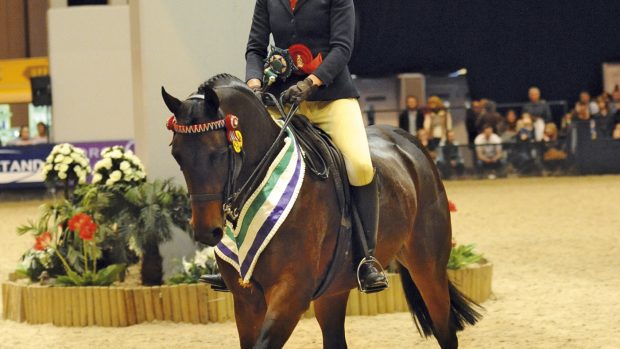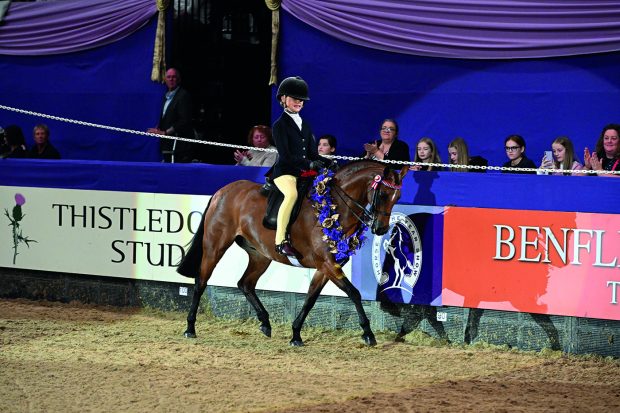H&H showing columnist Rebecca Penny on how mini, junior and open M&M ponies should be presented and why they should differ from each other
WITH Horse of the Year Show (HOYS) looming and preparations underway, I think we will all be thankful to be able to get back into those arenas at the NEC and enjoy the buzz after missing out in 2020.
While the majority of preparation can be undertaken at home, it’s extremely difficult to recreate the electric atmosphere of either arena.
Of course, it’s productive to attend organised practice events and clinics, but it’s equally as important to let the smaller children acclimatise to the environment when they actually get to the show so they are not too overwhelmed by the whole experience.
I often find it beneficial for them to be seated for an hour or two in the arena grandstand to let it all sink in before they compete, especially if they are first-timers.
While on the subject of children and smaller ponies, we now have an array of classes for mountain and moorland (M&M) small breeds to compete in, from lead-rein to open ridden, with a number of combinations contesting multiple classes successfully.
However, I feel it’s important that we have a clear differentiation between a first ridden, junior and open pony, not only in way of going but also in type and suitability for the class they are competing in.
I believe a first ridden and an open pony should go in an entirely different way.
I would expect the former to dink along sweetly looking after its jockey and not be too exaggerated in its movement. I would also potentially forgive them for being slightly lighter of limb in favour of being suitable for a child.
When looking at an open pony I would want to see a little more pizazz, expressive movement and a more polished individual performance, not waiting for corners to pick up canter and demonstrating all four paces well, all while the pony remains true to type.
This isn’t supposed to be a class judged on cute factor, nor should we be dismissing small adults on stallions which has been the case on some occasions. It would appear that the lines are becoming increasingly blurred.
The mini M&M classes are undeniably some of the most hotly contested; I did joke at the British Show Pony Society summer championships that I’d spent more evenings in the mini ring than I had in the bar.
Qualifiers for these classes throughout the season are averaging at well over 30 entries in most instances, so is it now time to look at a possible split for these sections into Welsh breeds and non-Welsh breeds? It could be the case that the top two from each section come head to head in a championship for the qualification so the same amount of tickets were awarded, but it would potentially be in the children’s best interest so they’re not sitting in two-hour-long classes.
On the subject of measuring, I’d like to echo Robert Walker’s comments (opinion, 2 September) with regards to mid-season remeasurements. Once a horse or pony has been measured, that measurement should stand for the entire year, and any objections should not be anonymous.
Before signing off I’d like to wish everyone heading to Birmingham the best of luck. Remember to enjoy yourselves; you’ve already done the hardest part – getting there.
You might also be interested in:

Road to HOYS: Is this roan Welsh pony with a ‘cheeky streak’ one of the show’s most versatile contenders?

Road to HOYS: Exmoor mare makes history as the first of her breed to qualify for lead rein final

Robert Walker: ‘Recalling show animals for height checks shouldn’t be anonymous’

Subscribe to Horse & Hound this spring for great savings
Horse & Hound magazine, out every Thursday, is packed with all the latest news and reports, as well as interviews, specials, nostalgia, vet and training advice. Find how you can enjoy the magazine delivered to your door every week, plus options to upgrade your subscription to access our online service that brings you breaking news and reports as well as other benefits.





